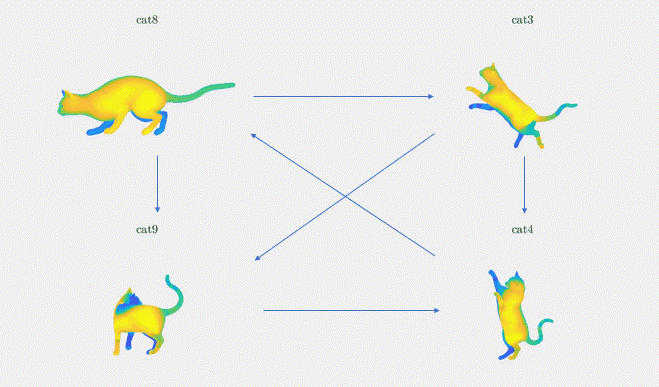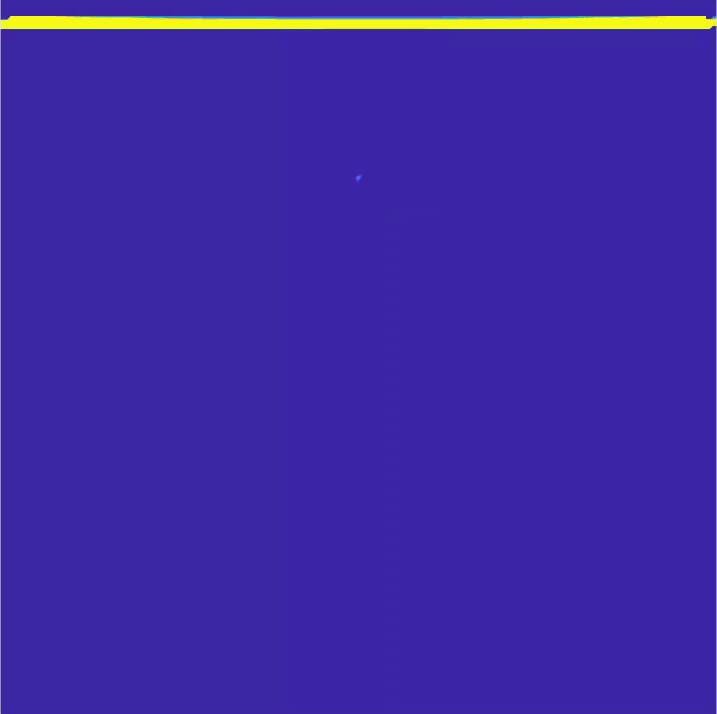The Shape Of Success: The Summer Geometry Initiative

Associate professor of Electrical Engineering and Computer Science Justin Solomon wants to bring great students into his research field from all corners of the globe. The Summer Geometry Initiative, a paid six-week summer program offered virtually during the summer of 2021, introduced undergraduates and master’s students to the exciting, interdisciplinary world of geometry processing, the field that underlies technologies from autonomous driving to videogames. The competitive six-week paid summer research program provides students with opportunities to work and learn from one another, while receiving guidance and mentorship from graduate students, faculty, and research scientists. After a week of intensive training, students work in teams on research projects with the goal of launching longer-term collaborations with faculty at MIT and other top institutions. We sat down with Solomon to learn more.
Tell us about the goals of the program!
Broadly, SGI is a program in geometry processing, an area of research that many undergraduates don’t have the opportunity to be exposed to. So, what we see in the graduate student pipeline is largely that the people who make it to the upper levels in this discipline come from relatively few institutions and have relatively homogenous backgrounds. So, the goal for SGI was to spark new collaboration between different labs and people who don’t normally work on this topic, while introducing a new cohort of students to geometry processing research who wouldn’t normally get a chance to work on this discipline.
Many of us who remember a prior generation’s dry geometry textbooks full of diagrams might not know what differentiates geometry processing from what we learned in high school. Can you fill us in on the differences?
Geometry processing found its start in computer graphics, but it also has roots in 3D printing, autonomous driving, architecture, and other fields. It’s all about applying advanced math combined with algorithmic insights to create tools for processing and editing three-dimensional shapes.

Geometry processing combines ideas from a lot of separate disciplines that are congealing into a single field, giving opportunities for a lot of interdisciplinary work. Within this field, you can find students who started out in medicine working next to students who started in manufacturing and 3D printing. To give an idea of the kinds of problems our SGI students worked on, take a look at our list of research projects and talks: you’ll see guest speakers from academia, computer animation, materials science, engineering, and many areas in between.
What did you learn from implementing this program online?
The fact that the program was held online was out of necessity due to the pandemic, but it pushed us to reconsider typical approaches to research-based education. We were able to recruit a cohort of students from all over the globe—Asia, South America, Africa, Europe, and North America—which certainly wouldn’t have happened with an in-person program.
In most undergraduate research programs, it’s one undergraduate by themself in a lab for a few weeks, and if they’re lucky, they get a good mentor. In SGI, we wanted a more collaborative setting, and we also couldn’t assume that our students possessed baseline knowledge of this research field. So, for the first week, we had instruction and tutorials led by experts in the field. Then, we devoted the remaining five weeks to research experience, as well as guest lectures, panels on graduate admissions and graduate school, and other activities.
Because it’s difficult to get people to volunteer for six whole weeks, we invited volunteer mentors from industry and academic institutions to join us for one to three-week periods. At the end of each week, the students would view a list of available projects from the mentors, rank the projects in terms of their preferences, and then there would be a matchmaking process. This structure was very successful—the amount of facetime the students got with their mentors was phenomenal, with some reporting over two hours a day. Moreover, the students were working in teams, making the experience more collaborative than being isolated in a lab.
SGI Fellows Natasha Diederen, Alice Mehalek, Zhecheng Wang, Zeltzyn Montes Rosales, and Olga Guțan studied the design and physical properties of minimal surfaces, guided by volunteer mentors Etienne Vouga (professor at UT Austin), Nick Sharp (postdoc at University of Toronto), Josh Vekhter (doctoral student at UT Austin), Stephanie Wang (postdoc at UCSD), and Erik Amézquita (doctoral student at Michigan State University). For more details on this project, visit: http://summergeometry.org/sgi2021/minimal-surfaces-but-with-saddle-points/
Tell me about how the program was received by the student participants, and what you’ll be carrying into next year.
It’s important to note that this program was paid. For equity reasons, we wanted to make sure that the opportunity cost of participating in this program, relative to taking a summer job, was low. Our students were an extremely diverse bunch, who shared their experiences and thoughts via Twitter throughout the program and used social media to connect with each other. This was a global program with students spread across 27 countries, so there was a relatively small window of time when we asked people to be physically available—11 AM-4 PM Boston time—and even that was a challenge for our SGI Fellows in countries like Bangladesh and Vietnam, who had to adjust their schedule to participate. But, due to the online setting, we were able to recruit colleagues from all over the world to hop on digitally, mentor for a couple of hours, then go back to their lives in whatever time zones they happened to live in.
The feedback from both the mentors and the students was overwhelmingly positive; it let us know we were on the right track. One SGI Fellow in particular, Marcus Vidaurri, gave feedback that really stuck with me: “Each project had a unique set of perspectives, questions, methods, and applications that deepened my understanding of geometry processing research. I also got to witness firsthand the breadth of geometry processing and meet amazing people from all over the world.”
The Summer Geometry Initiative is currently seeking funding for 2022; if you are interested in becoming a sponsor of this program, please contact Prof. Justin Solomon at jsolomon@mit.edu .
Media Inquiries
Journalists seeking information about EECS, or interviews with EECS faculty members, should email eecs-communications@mit.edu.
Please note: The EECS Communications Office only handles media inquiries related to MIT’s Department of Electrical Engineering & Computer Science. Please visit other school, department, laboratory, or center websites to locate their dedicated media-relations teams.